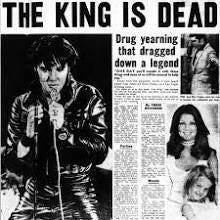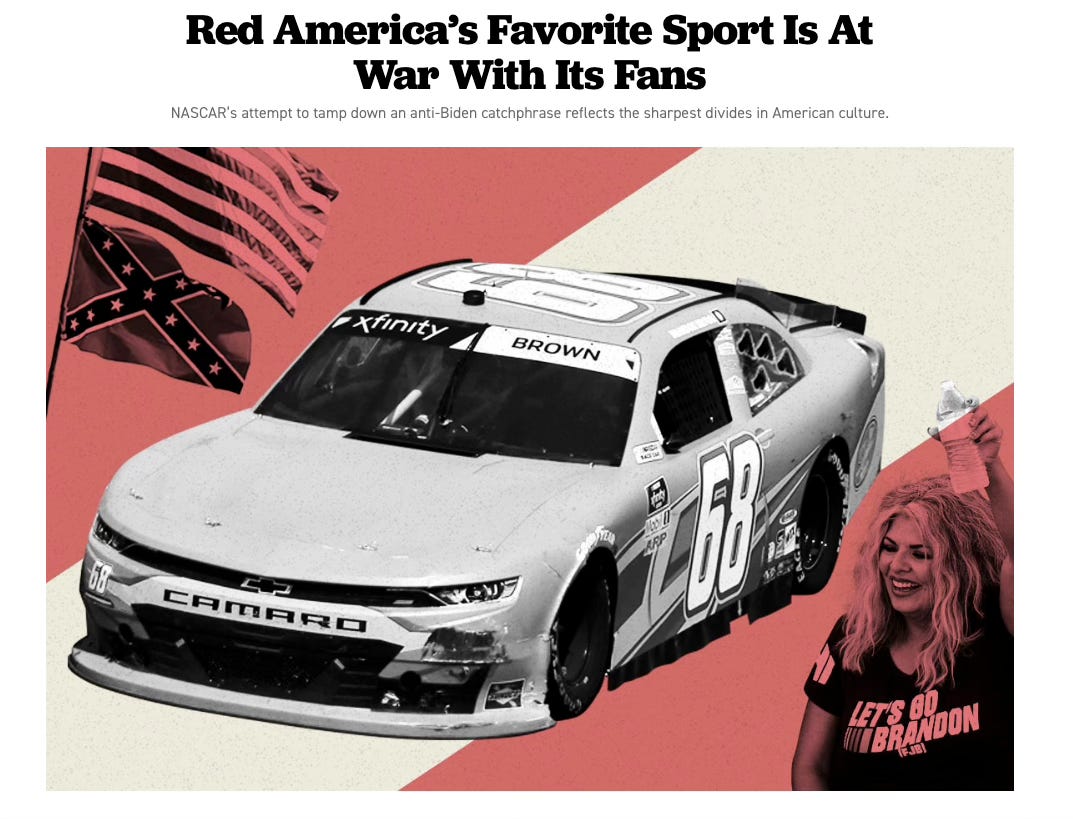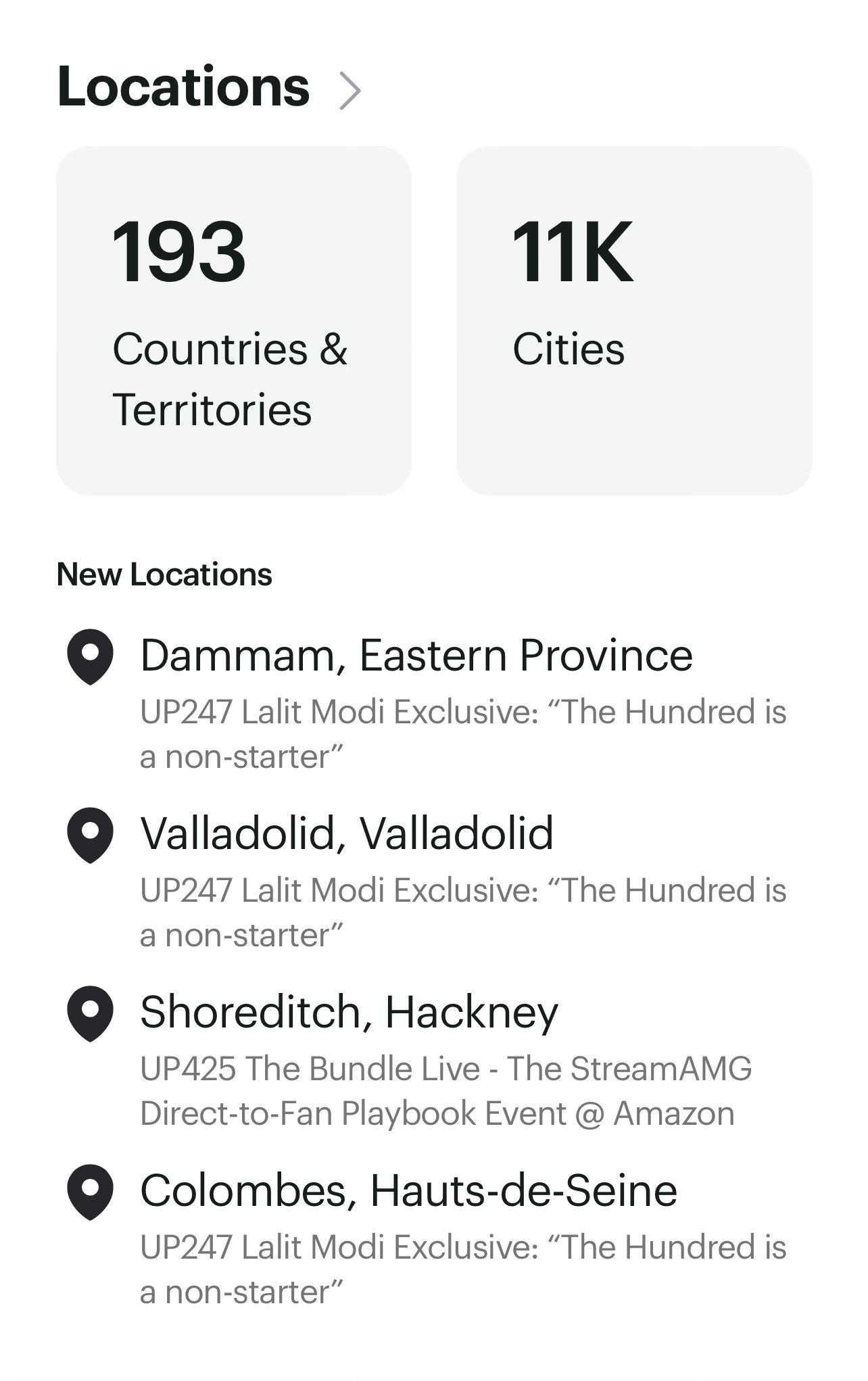Kamala politicises F1; Is Modi right; Lester Bangs on Elvis; Squeezed Middle; Expected Goals; Ralph Lauren v AI; Synergy Windfall; WSL attendance; The lure of tennis
Overthinking the sports business, for money
This newsletter is sponsored by Leaders in Sport - Get 15% off Summit passes
Leaders in Sport connects the most influential people and the most powerful ideas in global sport to catalyse discussion, and drive the industry forward. Through a series of global summits in North America, Europe, Asia and the Middle East, invitation-only memberships and long form content, Leaders in Sport provides professional executives, both on and off the field, with access to a community of peers to share best practice and trends that are shaping the future of sport. Their flagship event, Leaders Week London, returns from 14 to 17 October, with The Summit taking place at Twickenham Stadium hosting the most senior executives from over 40 countries, including over 100 brands. We'll be there, and you should join us. Visit leadersinsport.com/UP for more information and use UP15 for a 15% discount on your Summit passes.
Modi is box office, but is he right?
The Lalit Modi podcast dropped over the weekend and has made waves, across social and picked up by media beyond the sports business bubble.
The founder of the Indian Premier League tears apart the ECB sales decks for The Hundred franchises, the process of which is being managed by Raine Group.
His main arguments here, from last week’s newsletter: Lalit Modi has entered the building.
Unsurprisingly, we’ve had some feedback, both in support of his arguments and pointing out some inconsistencies in his arguments.
The one that resonates is the issue of international demand for The Hundred.
This is critical, because the future media rights outlook offered in the Raine Group sales deck shows a marked jump in income from outside the UK domestic market in 2028, the renewal moment of the ECB’s all encompassing TV deal with Sky.
Lalit Modi: They have 2.1m pounds today for international rights up to 2032, it constitutes about 47 per cent of the total revenue The Hundred is going to make. For the IPL, international rights are about 3 per cent. The NFL has a similar number, they have negligible international revenue.
A very informed listener got in touch:
Saying that the % of international rights vs domestic media rights is very low for IPL and thus, the ECB have overstated it doesn’t make sense. The IPL domestic media rights value is so massive that of course the international rights are going to be a small percentage. Same with sponsorship vs media rights value.
Not saying that his fundamental point that the ECB have taken a quite rosy view of these things is wrong… but the comparison point is a misleading one when you use percentages!
NFL’s media rights activity outside of USA is actually ok for a sport that has been exported with very little participation or historical connection. But of course, absolutely dwarfed by the domestic rights fee.
Indeed - the position lost credibility when using Jagger (not because of Mick Jagger per se - but because the average English resident is much less swayed by celebrities… further, the celebs they got into the IPL (Shah Rukh Khan and Preity Zinta) were absolutely at the zenith of their stardom at the time.
Also, the comments about the OTT opportunity in the UK market raw fanciful in terms of his own project. If he is criticising the ECB for misstating potential, then using the OTT opportunity based on the success of the split television/digital structure of the Indian IPL rights is a far more egregious error.
The Squeezed Middle returns
It includes the best story on how D2C changes everything.
Aquatics GB CEO Drew Barrand was previously Marketing Director of EFL during the launch phase of it’s D2C streaming service iFollow.
“I remember this in the very early days of iFollow launching and we were on. The crazy thing about that was you were trying to live stream 36 matches simultaneously on the same day, having never done it before. I remember sitting with my kids who were pretty young at the time on a Saturday afternoon, it was like 10 to 3, and I fielded three phone calls on the bounds.
One of which was an argument between two cameraman about the drainpipe above them was dripping on one of their heads, and they wanted to switch positions, but they were arguing about who had the best position on a rainy Saturday. I don't know northern town, that I'm not going to reference. That was one phone call.
The second one was from a very, very wealthy man who owned a football club and was lying on a beach in Miami and forgot his password to log in to the stream. The third phone, a disgruntled customer who couldn't understand why it wasn't on Sky. In a nutshell, that all happened in two minutes, three minutes before a 3pm kickoff.
From Unofficial Partner Podcast: UP248 The Squeezed Middle - Frenemies: Where Next For The NGB Model?
The conversation is based on research from PTI Digital, taken from a survey of sports CEOs.
There’s an expectation of flat revenues across the board.
So the question for all is, what can we do to break out from that outlook?
Cue a queue of new formats and digital inventory, seeking a bump in the flat revenue line. See how FIFA has carved out the Club World Cup as a new thing, much to the irritation of its own existing sponsors, who assumed it was part of their deals.
Fine to do once, but doesn’t do much for sponsor trust over the longer term.
See previous note on Organic v Manufactured formats
PTI’s Ben Wells shared the headlines:
You can download PTI’s new Sports Leader Benchmark Report here.
Don’t copy Arsenal, copy Bristol City
I’m biased obviously, and I always thought Expected Goals would be good, but blimey…it’s one of those where I’m listening and stopping every few minutes to write down notes to steal.
There’s a great exchange between Maggie and Matt on attendances, ticket prices and the difficulty in getting the match day experience to fit the audience which doesn’t want the same thing as served up at a men’s game.
This is from Matt’s spreadsheet of WSL attendances:
Maggie Murphy: “I think there's one other really interesting thing that is missing from the WSL this year, and that is Bristol City. And what I find fascinating is that Bristol City was the only non-Premier League club in the WSL last year, but they absolutely smashed out of the park on their matchday experience. They hosted all their games at Ashton Gate, and they got really, really strong attendances throughout the whole season, which proves you don't have to be a Premier League club to get those data points and to host great games. And I wonder whether actually some of the dip this season is because Bristol City got relegated and are now in the championship.
Matt Cutler: Yeah, my spreadsheet says they were the fifth most attended WSL team last season. And that's ahead of Liverpool, Spurs and Villa. So they had a great success story. But what is it that the other clubs in, not just the WSL, but in the championship and other leagues, can be doing to try and make sure that this slump doesn't continue for the rest of the season?
Maggie Murphy: There's lots of things. I think with Bristol, I always admired them. I would always look[…]”
From Expected Goals: Are this season's WSL attendances worrying?
Click to subscribe, Expected Goals goes out every Wednesday.
Contact Matt@UnofficialPartner.co.uk with questions for the Mailbag.
Won’t anyone think of Ralph Lauren?
I love the AI replacing Wimbledon line judges story.
It’s got a bit of everything, from tech induced moral panic to the commercial value of nostalgia; strawberries, blazers and queuing plebs.
(Btw, hear David Cushnan on the rise of Nostalgia Formats on last week’s The 3 podcast, he’s very good).
This being a sports business newsletter, the Wimbledon AI story quickly goes to sponsorship, and the Ralph Lauren deal that ensures the ball kids, line judges and umpires are all kitted out in posh polo shirts and chinos.
The Wimbledon brand is fascinating.
It’s about tradition, obviously. But each year the AELTC is keen (desperate?) to be about ‘the future’, offering up media narratives around tech, sometimes as an IBM sponsor activation.
Every major sport wrestles with the past and the future. Traditions and new audiences. And Wimbledon does this as well as anyone imho.
Every generation overbids on tennis
The tennis pitch comes every few years.
Earnest people citing data.
One of few truly global sports, and by that they mean: America and outside of America.
Men and women.
Grand Slams to council courts.
In theory, there’s lots to like.
No surprise then to see PIF biting.
One analysis of the Saudi effect on the sports market is they are overpaying for the middle of the market.
In tennis, this is the bit below the Grand Slams, where they are bringing together men’s and women’s tours.
Comms line of the week: Synergy Windfall
Details of the ATP and WTA merger were revealed this week.
The headline was the 80:20 revenue split, favouring the men’s tour.
This is based, I think, on the existing revenue imbalance between the tours. The ATP makes £238million in filed accounts from 2022, while the WTA took £90million.
But in a sport that wants to promote equality, that’s a bad look.
So…we get to a new addition to the sports marketing lexicon:
However, the respective chairmen of the ATP and WTA will stress that this figure is a starting point. An important clause will allow the tours to split “synergy windfall” 50/50.
It means any extra profit outside the projected growth would be split equally between the male and female circuits.
The WTA is hoping to see this synergy income within a couple of years of merging as the two tours will be able to share resources in their marketing and commercial departments.
Might work I suppose…but there’s a theme here.
The WTA’s golfing version, the LPGA, the women’s professional golf tour in the US, hooked its fortunes to the PGA Tour. The comms around this deal had echoes of PIF’s ATP-WTA plan. There was talk of synergies.
The reality was revealed in a deposition made to a US court, as part of lawsuit against the PGA Tour by Hank Haney.
Questioned about the NBC deal in that deposition, Monahan replied, “Given that today they have very little programming on NBC beyond the KPMG Women’s Championship, until they’re able to have more programming on it, nothing really has changed.”
Haney’s lawyer: “So it’s essentially ninety-nine point something percent goes to the PGA; is that correct?”
Monahan: “Yeah. North of 95 percent.”
Jay Monahan, the PGA Tour Commissioner countered that the 10% the LPGA got from all deals was more than they would’ve had before.
It wasn’t pretty though.
To hammer home the charge that the PGA Tour isn’t concerned about the LPGA, counsel for Haney quizzed Monahan on his knowledge of women’s golf. Monahan could not name the top golfers and said he had not attended an LPGA tournament as commissioner. (He had before his tenure.)
“Can you give me the top five ranked players playing in that tournament this week?” Haney’s lawyer asked. (The LPGA played the U.S. Women’s Open in Houston that week.) “I can’t specifically give you the top five players ranked in that tournament,” Monahan replied. Haney’s lawyer then asked, “Who is the top-ranked woman playing in the tournament?”
Monahan: “I’m not sure what the latest iteration of the world ranking is.”
Go deeper: The Athletic’s Dan Kaplan wrote the story.
History rhymes: Beware the siren call of tennis
In 1999 Jean Marie Weber signed the biggest ever marketing and television contract in tennis with the ATP securing the sport a so far unknown exposure and a stunning amount of $1.2 billion over 10-years.
But. It took ISL under.
Having signed the guarantee, they couldn’t sell the rights for the nine Masters tournaments in the European TV-market, forced on to small pay-per-view channels. ISL Worldwide managing director Daniel Beauvois admitted in Marketing Week late in December 1999:
"We know we will probably lose money in the first year. But we are confident we can make this event work. Some existing deals are precluding us from approaching new sponsors, but when these expire - in the coming year - we will be able to intensify our activities.”
Estimates at the time put ISL losses at 50-70 million dollars in the first year alone on the tennis deal. In January 2001 ISL had to admit to its tennis partner ATP that the company was unable to pay what it owed. In April ISL tried to break the deal by paying ATP between 150 and 160 million dollars.
We will never again agree on anything as we agreed on Elvis
When Elvis Presley died in 1977 Rolling Stone journalist Lester Bangs (famously played by Philip Seymour Hoffman in Almost Famous), wrote an obituary of the King in The Village Voice.
It is a stunning piece in its own right. Read it in full here.
But it’s the final paragraph that is most astonishing for its foresight, predicting the impact of media disintermediation. Written nearly fifty years ago, it remains the most eloquent description of where we are today.
If love truly is going out of fashion forever, which I do not believe, then along with our nurtured indifference to each other will be an even more contemptuous indifference to each others’ objects of reverence. I thought it was Iggy Stooge, you thought it was Joni Mitchell or whoever else seemed to speak for your own private, entirely circumscribed situation’s many pains and few ecstasies. We will continue to fragment in this manner, because solipsism holds all the cards at present; it is a king whose domain engulfs even Elvis’s. But I can guarantee you one thing: we will never again agree on anything as we agreed on Elvis. So I won’t bother saying good-bye to his corpse. I will say good-bye to you.
Bit of a leap, but I thought of the Lester Bangs piece this week, when Joe Root became the highest run scorer in England test match history. There was a time when this would’ve been dinner table conversation. But it barely got mentioned on my cricket WhatsApp group.
Republicans buy cars too
Kamala Harris just politicised F1.
Asked about her F1 fandom by Howard Stern, the US Vice-President and Democratic nominee came over as a genuine fan (a Drive to Survive convert?), a nice change from the car crash, sorry, interviews given by politicians trying to court the sport vote.
This next exchange is so revealing, both of Stern but also of what it might say about F1’s position in the US sport landscape - niche, upmarket, bicoastal. Democrat.
Stern: Who’s your favourite driver?
Harris: ‘Lewis Hamilton, of course…he’s leaving Mercedes’.
Stern: ‘I’ve no idea who that is’
I’m always on the lookout for a disconnect between the people who run a sport and the people who follow it. I’ve written previously that The FA and England fans are a bad fit. Culturally, politically, unaligned: Like the Labour Party leadership and Red Wall voters.
Harris for F1 feels like a good fit. Based on absolutely no data or insight whatsoever, my bet is that many of FOM and Liberty Media lean liberal, politically and/or culturally.
Compare this to Nascar, where the owners and the fans are similarly aligned but on the other side, heavily skewed toward Republican and/or Trump. Which makes this piece is interesting, thanks to Prof Chadwick for sending it.
The sport most strongly associated with (and beloved by) Red America has barred a planned sponsorship deal between one of its drivers and the coin, and NASCAR now finds itself unexpectedly at odds with one of its up-and-coming stars, a large segment of its own fans and the right-wing media ecosystem itself.











